
Sister Mary Theresa Martin (1881-1929) was an Australian nurse. During World War I she served in the 2nd Australian General Hospital, Nursing Service, which was part of the Australian General Hospital. [2] [3]

Sister Mary Theresa Martin (1881-1929) was an Australian nurse. During World War I she served in the 2nd Australian General Hospital, Nursing Service, which was part of the Australian General Hospital. [2] [3]
Mary Theresa Martin was born in 1881 in Rockhampton in Queensland, Australia. [4] She trained as a nurse and subsequently joined the staff of the Royal Newcastle Hospital. On the outbreak of World War I she signed up for active service abroad and was assigned to the 2nd Australian General Hospital. She sailed from Sydney on 28 November 1914 on Transport A55 Kyarra on 28 November 1914. [3] After the war ended she returned to Australia on 9 November 1918. She found employment at the Prince of Wales Hospital, Sydney, where she worked for the next ten years.

Mary Martin's life was probably no different from numerous others who joined and served in the Armed Forces in WWI. However, through one small incident – a memorable visit to the Great Pyramid of Giza – she left her name to posterity.

Whilst in Egypt with thousands of other Australian troops waiting to be deployed, Mary Martin visited the Great Pyramid of Giza and painted her name on the wall inside Campbell's Chamber, the uppermost of four chambers directly above the King's Chamber. The inscription, or rather graffiti, reads "SISTER M. MARTIN 2nd. GEN. HOSP 6.2.15" indicating that she visited the pyramid on 6 February 1915. This date is consistent with the deployment of Australian troops (for example the 11th Battalion) who trained in Egypt before being sent into action.
She died on 23 October 1929. She was interred in the Roman Catholic portion of the Botany Bay cemetery within the Eastern Suburbs Memorial Park. [4]
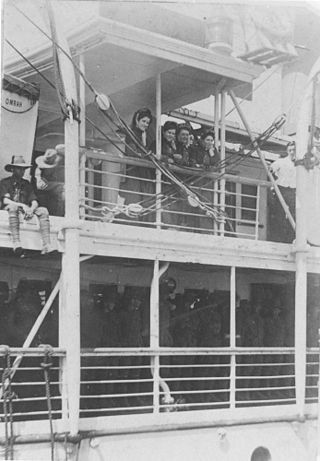
The role of Australian women in World War I was focused mainly upon their involvement in the provision of nursing services. Australian women also played a significant role on the homefront, where they filled jobs made vacant by men joining the armed forces. Women also undertook fundraising and recruiting activities as well as organising comfort packages for soldiers serving overseas. Around the issue of conscription, women were involved in campaigning on both sides of the debate, while they were also equally involved in the New South Wales strike in 1917. Nevertheless, despite this involvement, women have never occupied a central position in the Australian version of the ANZAC myth, although since the 1970s their role has been examined in more detail as a result of the emergence of feminist historiography, and specialist histories such as the history of nursing.

Frances Emma "Fanny" Hines was a nurse from Victoria, Australia, who served in the Second Boer War. She was the first Australian woman to die on active service.

Alice Appleford, was an Australian civilian and military nurse who took part in both World Wars. She has been described as Australia's most decorated woman. During the First World War she served in hospitals in Egypt and France and was one of only seven Australian nurses to be awarded the Military Medal for gallantry. In the Second World War she held a senior post within the Australian Army Medical Women's Service. In 1949 she was awarded the Florence Nightingale Medal, the highest award made by the International Committee of the Red Cross.

Rose Ann Creal, was a decorated Australian nurse of the First World War.

Mary Gorman was a New Zealand nurse who served in World War I and died when the SS Marquette was torpedoed and sunk in 1915.

Jean Nellie Miles Walker RRC, was an Australian army nurse who served in Egypt during World War I. She was the only Tasmanian nurse to die on active service during World War I.
Louisa Annie Bicknell was an Australian civilian and military nurse who died while serving in World War I.
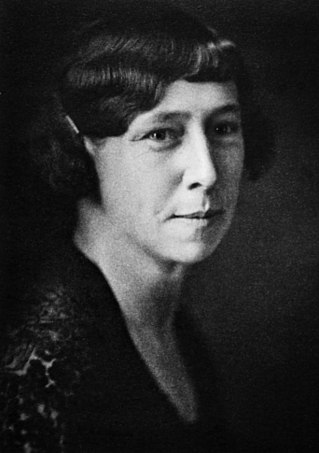
Fannie Eleanor Williams MBE, ARRC, known as Eleanor Williams, was an Australian scientist. She served as a bacteriologist during World War I, and was the third scientist and the first woman appointed to work at the Walter and Eliza Hall Institute of Medical Research after its establishment in 1915. She directed a laboratory studying infectious diseases, and had particular expertise in dysentery, hydatid disease and snake venom. She co-founded Australia's first blood bank.
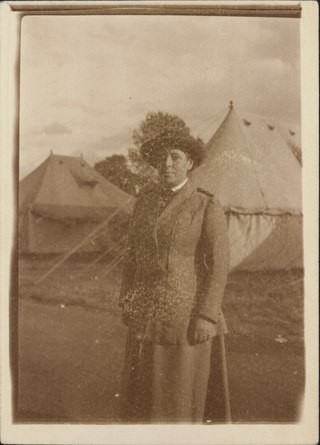
Alice Elizabeth Barrett Kitchin was an Australian nurse who served in the First World War with the Australian Army Nursing Service.
Norah Margaret Martin (1888–1977), later known by her religious name Mother Mary Bernard, was an Australian religious sister and the superior general of the Little Company of Mary, an order of religious who care for the ill. She served as superior general for 12 years, from 1947 to 1959. She also served as provincial superior for the New Zealand and the Australian provinces. She was a skilled nurse and served as superior for several of the order's hospitals. She initiated the effort that eventually led to the beatification of Mary Potter, the founder of her order.
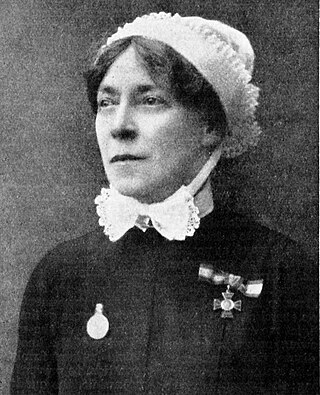
Euphemia Steele Innes RRC DN was a Scottish nurse who served for 21 years as matron at Leeds General Infirmary in Leeds, West Riding of Yorkshire, England. She was decorated with the Royal Red Cross 1st class in 1916 for services with the Territorial Force Nursing Service in the First World War.

Cora Beattie Roberton, was a decorated New Zealand nurse who ran several Allied hospitals in the United Kingdom during the First World War. In time, she was appointed matron to every major hospital for injured New Zealand soldiers in England.
Lieutenant Colonel Ethel Frances Hanrahan, was an Australian Army nurse who served in England and the Middle East during the Second World War. For her services in the Middle East, she was mentioned in despatches twice for gallant and distinguished services. In February 1947, she was appointed the first matron at the Repatriation General Hospital, Heidelberg.

Margaret Dorothy "Dot" Edis MBE was an Australian nurse who served in both World Wars. In 1965 she received the Red Cross's Florence Nightingale medal.

Ethel Jessie Bowe, was an Australian military nurse during the Second World War and later matron-in-chief of the Royal Australian Army Nursing Corps. She was awarded an Associate Royal Red Cross in 1944, a Florence Nightingale Medal in 1953, a Royal Red Cross in 1955 and appointed an Officer of the Order of the British Empire in 1960. She became an honorary colonel and an honorary nursing sister to Queen Elizabeth II.
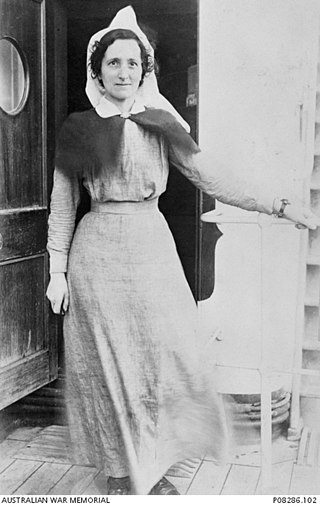
Alicia Mary Chipper, was an Irish-born Australian nurse. She was awarded the Associate Royal Red Cross and the Military Medal for her bravery during the First World War.

Mary Anne Pocock,, commonly known as Bessie Pocock, was an Australian nursing sister and army matron who served in the Second Boer War and the First World War. She was awarded the Associate Royal Red Cross and thrice Mentioned in Despatches for her wartime service.
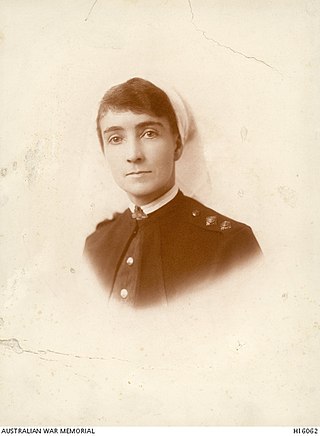
Nellie Constance Morrice was an Australian army and civilian nurse. Following her overseas military service in World War I, she was secretary of the New South Wales Bush Nursing Association for 23 years, overseeing significant growth in its coverage.